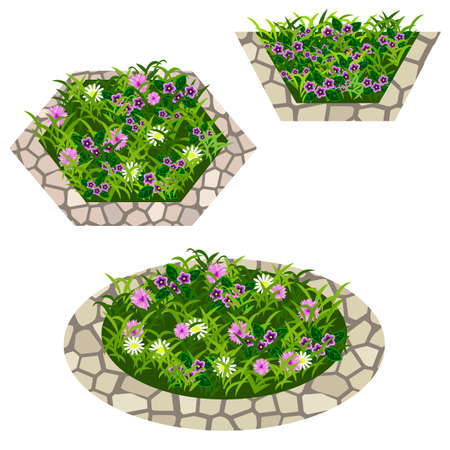1. Getting to Know Your Allotment Site
Before you dig in and start plotting out your dream allotment, it’s crucial to familiarise yourself with the site itself. Every allotment has its own set of rules and expectations, which can vary from council-run sites to privately managed plots. Take time to read any paperwork provided by your site manager or local authority, as these documents often outline what you can and cannot do—think shed sizes, composting guidelines, or restrictions on bonfires. Beyond the rulebook, getting to know your fellow plot holders is just as important. There’s a strong sense of community on most British allotments; a friendly chat over the fence can lead to invaluable advice, shared seeds, or even a helping hand when you’re tackling stubborn brambles. It’s also worth finding out if your site runs communal projects or has shared facilities like water butts, tool sheds, or manure deliveries. Tapping into these local resources not only saves you money but also helps you integrate into the allotment community. Remember, showing respect for others’ plots—keeping pathways clear, managing weeds promptly, and keeping noise to a minimum—goes a long way towards building good neighbourly relations.
2. Plot Assessment and Planning
Before you dive into planting, taking the time to properly assess your new allotment plot is a key step for long-term success. A well-considered layout, based on thorough observation and assessment, will save you both time and effort in the seasons ahead. Here are some essential factors to evaluate:
Soil Quality: The Foundation of Your Plot
The quality of your soil directly impacts what you can grow and how much effort you’ll need to invest in improving it. Start by digging a few test holes across the plot to examine texture, structure, and depth. Is the soil sandy, clay-based, or loamy? Does it crumble easily or stick together in heavy clods? Carry out a simple pH test using a kit from your local garden centre to determine if your soil is acidic, neutral, or alkaline. Here’s a summary table to guide your assessment:
| Soil Type | Key Features | Typical Crops | Improvement Tips |
|---|---|---|---|
| Sandy | Drains quickly, warms early, low nutrients | Carrots, potatoes, parsnips | Add organic matter, mulch regularly |
| Clay | Heavy, slow-draining, nutrient-rich | Cabbages, leeks, beans | Add compost/grit for drainage |
| Loam | Balanced texture, fertile, good drainage | Most vegetables and fruit | Maintain with annual composting |
Sunlight: Mapping Light Patterns for Plant Health
Understanding how sunlight moves across your plot throughout the day will help you place crops where they’ll thrive. Spend time on-site at different times to observe which areas get full sun (six hours or more), partial shade, or deep shade. In the UK climate, most productive crops prefer full sun; reserve shadier spots for leafy greens or storage sheds.
Quick Sunlight Assessment Checklist:
- Mornings: Which parts warm up first?
- Noon: Where is the brightest light?
- Late Afternoon: Are there shadows from trees or buildings?
- Seasonal Changes: Consider winter sun angles as well as summer.
Drainage: Avoiding Waterlogged Setbacks
Poor drainage can ruin crops and create ongoing maintenance headaches. After rainfall, check where water pools and how long it takes to drain away. If your plot is prone to sogginess—a common issue on many British allotments—consider raised beds or adding organic matter to improve structure.
Troubleshooting Drainage Issues:
- If puddles linger after rain: Plan raised beds in these areas.
- If soil stays dry even after rain: Increase mulching and organic matter.
- If ground slopes: Use contours for water management or create terraced beds.
A careful initial assessment of your plot’s soil, sunlight and drainage will provide a strong foundation for designing an efficient layout—giving your allotment the best start possible for years of productive growing.

3. Designing a Practical Layout
When planning your allotment layout, it’s crucial to strike a balance between efficient use of space and making the plot work for you year-round. Start by mapping out clear, wide paths—ideally around 45–60cm—to allow easy wheelbarrow access and reduce muddy boots in the wet British months. Opt for sturdy materials like wood chip or paving slabs to keep these routes usable through the winter. Next, define your growing beds. Raised beds are increasingly popular across UK allotments, as they offer better drainage (especially important in our damp climate) and make weed control more manageable. Aim for beds no wider than 1.2m so you can reach from either side without stepping on the soil, preserving its structure. Consider dedicating an area for compost bins and water butts to collect rainwater; these are invaluable for sustainable gardening and save you trips to the tap during dry spells. For features, think about what suits your lifestyle: a small shed or storage box keeps tools handy, while a seating area offers a spot for tea breaks or surveying your progress. Lastly, plan your layout with rotation in mind to prevent disease build-up—group crops with similar needs together and leave room for crop changes each season. With thoughtful design adapted to British weather and your own routines, your allotment will be both practical and enjoyable throughout the year.
4. Choosing Crops for the UK Climate
Making the right crop selections is essential for a successful allotment, especially with the UK’s sometimes unpredictable weather. Choosing varieties that are well-suited to local conditions will help ensure a bountiful harvest and less disappointment come autumn. Here are some recommendations for reliable vegetables, fruits, and herbs that thrive in British plots, with a nod to traditional favourites.
Reliable Vegetables
| Vegetable | Recommended Varieties | Notes |
|---|---|---|
| Potatoes | Charlotte, Maris Piper | Hardy and versatile; perfect for jacket potatoes or mash |
| Carrots | Autumn King, Nantes 2 | Sow in loose soil; great for stews and Sunday roasts |
| Cabbage | Greyhound, January King | Cold-tolerant; ideal for coleslaw or bubble and squeak |
| Runner Beans | Scarlet Emperor, Enorma | A classic British staple; prolific climber and easy to grow |
Popular Fruits for Allotments
| Fruit | Recommended Varieties | Notes |
|---|---|---|
| Strawberries | Cambridge Favourite, Elsanta | Sweet, reliable yields; perfect for summer desserts and jams |
| Raspberries | Malling Jewel, Autumn Bliss | Easily managed canes; high yields from early summer to autumn |
| Apples (dwarf trees) | Bramley, Egremont Russet | Bramley is excellent for cooking, while Egremont Russet is a crunchy eater’s favourite |
Tried-and-True Herbs
- Basil: Best grown under cover or in pots during cooler summers.
- Rosemary: Hardy evergreen—great for roast lamb and potatoes.
- Chives: Easy to establish; lovely in salads and omelettes.
- Mint: Vigorous grower—keep contained or it may take over!
- Coriander: Prefers cooler weather; sow successionally for a regular supply.
Nods to Beloved British Favourites
No British allotment feels complete without a patch of rhubarb or a row of runner beans. Consider adding broad beans (such as ‘Aquadulce Claudia’) for an early spring crop, and don’t overlook leeks (‘Musselburgh’ is a heritage choice) for hearty winter soups. These choices not only suit the climate but also connect you to generations of gardeners across the UK.
Top Tip:
If you’re new to allotmenteering, start with just a few varieties and expand as you gain confidence. Keeping notes on what thrives in your specific plot will help fine-tune your choices year after year.
5. Tools and Supplies: Keeping it Simple
When starting out on your new allotment, it’s easy to be tempted by shiny gadgets and an endless array of tools, but in reality, a simple kit is often the most effective. At its core, you’ll need just a handful of essentials to get started and keep your plot in good order.
Must-Have Tools for Every Allotment
Begin with a sturdy spade and fork—these are indispensable for digging and turning soil. A hand trowel and hoe will help with planting and weeding, while a rake is vital for levelling beds and gathering debris. Don’t overlook a decent watering can or hose (with a spray attachment if water pressure allows), especially given the unpredictable British weather. For maintenance, invest in sharp secateurs for pruning and a wheelbarrow to move compost, manure, or harvests around your plot with ease.
Sourcing Practical Supplies
Value for money is key. Local garden centres and DIY shops are obvious sources, but check community notice boards or local social media groups—many experienced allotmenteers are keen to pass on surplus or second-hand tools. Car boot sales can yield bargains, while some allotment sites have tool shares or communal equipment sheds.
Keep It Manageable
Avoid overbuying; instead, invest gradually as you learn what you really use season by season. Prioritise comfort—look for tools with wooden handles that fit well in your hands, and consider gloves suitable for the often damp UK conditions. Remember, well-chosen basics will serve you far better than a cluttered shed full of unused items. Focus on practicality: each tool should have a clear purpose on your plot.
6. Sustainable Practices and Wildlife
Embracing sustainable methods on your allotment not only benefits the environment but also creates a thriving space for both you and local wildlife. Here are some essential ideas to help you work harmoniously with nature as you plan and maintain your plot.
Composting: Transforming Waste into Gold
Setting up a compost heap is a must for any British allotment holder. Not only does it reduce green waste, but it also provides nutrient-rich soil conditioner for your beds. Choose a shaded corner of your plot for your bin or pile, add a mix of green (veg peelings, lawn clippings) and brown materials (cardboard, dried leaves), and turn regularly to keep it aerated. Homemade compost enriches your soil, supports healthy plant growth, and saves money on shop-bought alternatives.
Water-Saving Strategies
With unpredictable weather patterns in the UK, water conservation is key. Install water butts to collect rainwater from shed roofs—this is ideal for watering delicate seedlings. Consider mulching beds with straw or wood chips to retain moisture and suppress weeds. When designing your layout, group thirsty plants together and use watering cans rather than hoses to target roots directly, reducing evaporation and waste.
Supporting Pollinators
Pollinators such as bees and butterflies are vital for productive crops. Incorporate nectar-rich native plants like foxgloves, lavender, and comfrey along borders or between veg rows. Avoid using chemical pesticides; instead, encourage beneficial insects by creating habitats—think bug hotels or leaving a wild patch undisturbed. These simple steps ensure healthy pollination and naturally control pests.
Working with Nature
Adopt organic principles wherever possible: rotate crops annually to prevent disease build-up, companion plant to deter pests (such as marigolds alongside tomatoes), and welcome birds by hanging feeders or nesting boxes. Observing the natural rhythms of your allotment—such as when certain weeds emerge or which areas remain damp—will guide your decisions and foster a resilient, balanced ecosystem.
Final Thoughts
Sustainability isn’t just about eco-credentials—it’s about building an allotment that flourishes year after year with less effort and more joy. By composting, conserving water, supporting pollinators, and working hand-in-hand with nature, you’ll create a space that’s productive, environmentally friendly, and uniquely rewarding in the true spirit of British allotmenteering.


